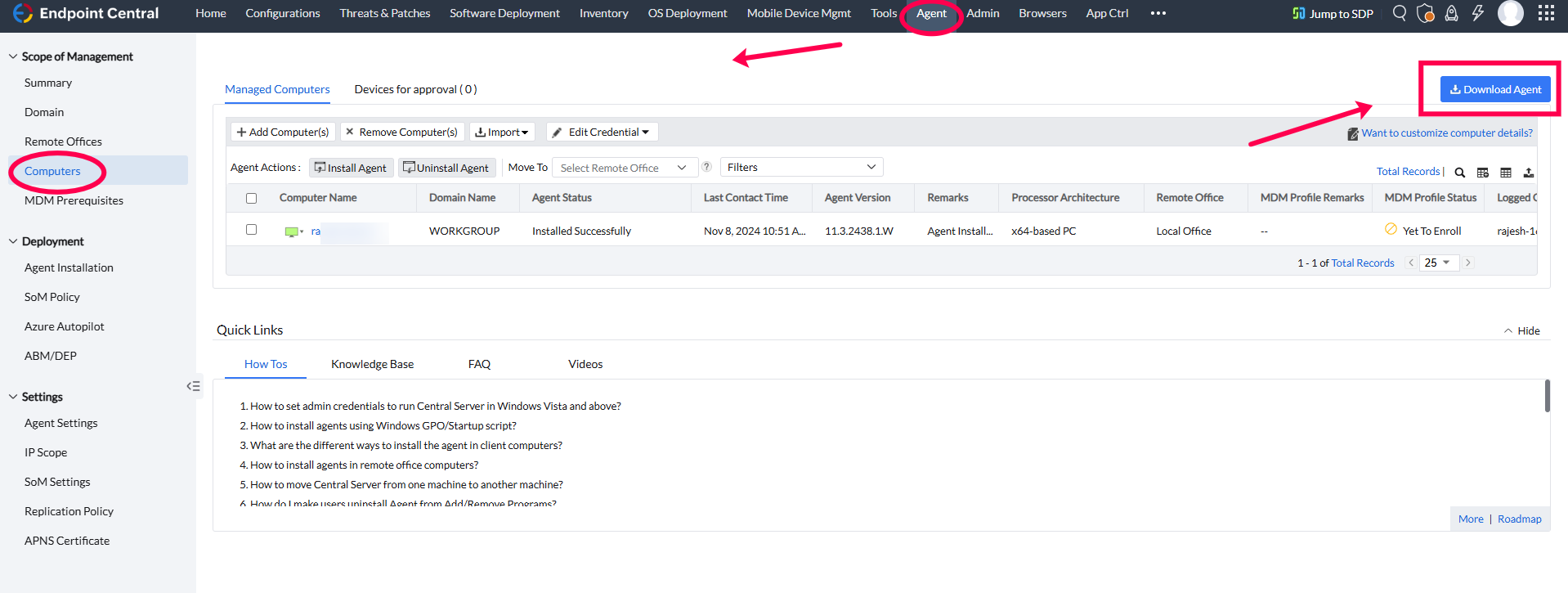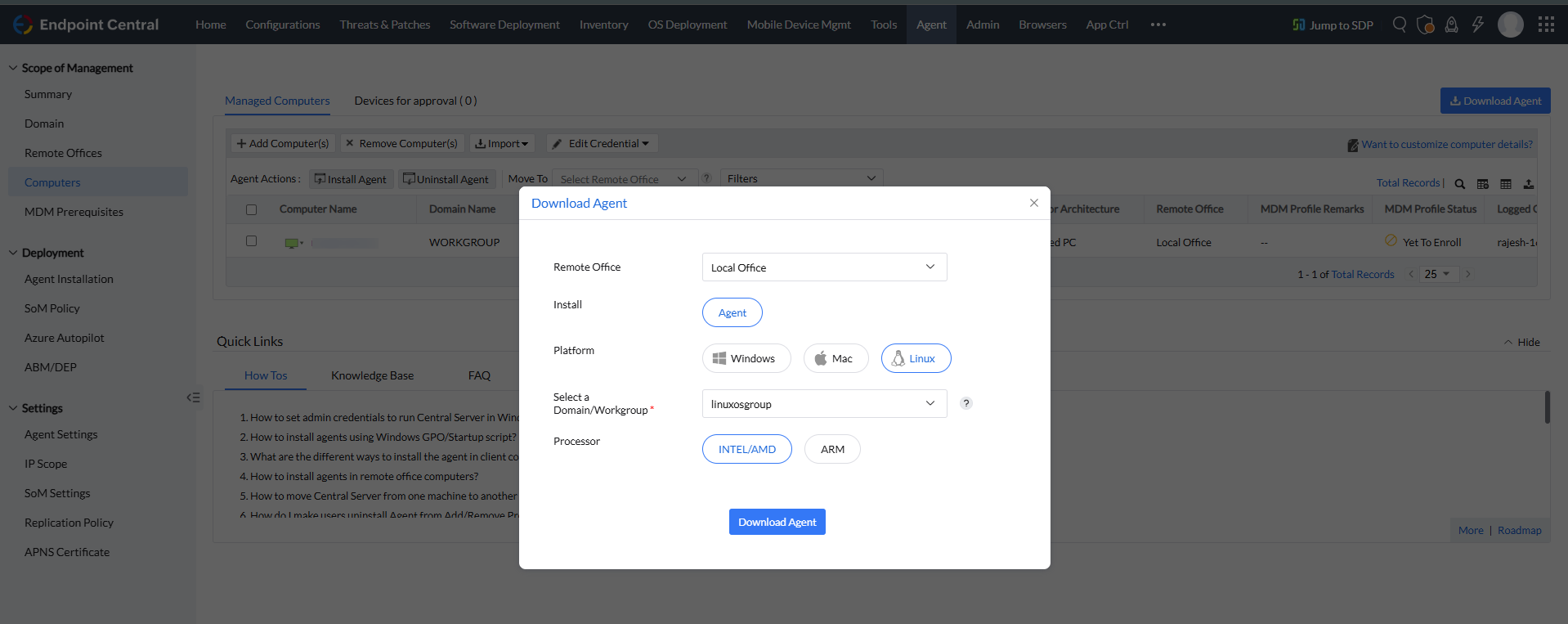How to Install and Uninstall Linux Agent
This guide provides detailed instructions for installing and uninstalling Linux agents, including manual and remote installation methods, prerequisites, system requirements, and agent privileges.
Installing Linux Agents Remotely from the Web Console
For computers within the LAN, agents can be installed by selecting the desired computers and invoking agent installation through the web console:
- Configure Credentials in Linux Agent Settings
- Go to Linux Agent Settings under Agent Settings on the Agent tab.
- Click Add Credentials to add a new credential.
- Enter Credential Name, Type, Domain, Username, and Password, then click Save.
- Select the credentials and click Save Changes.
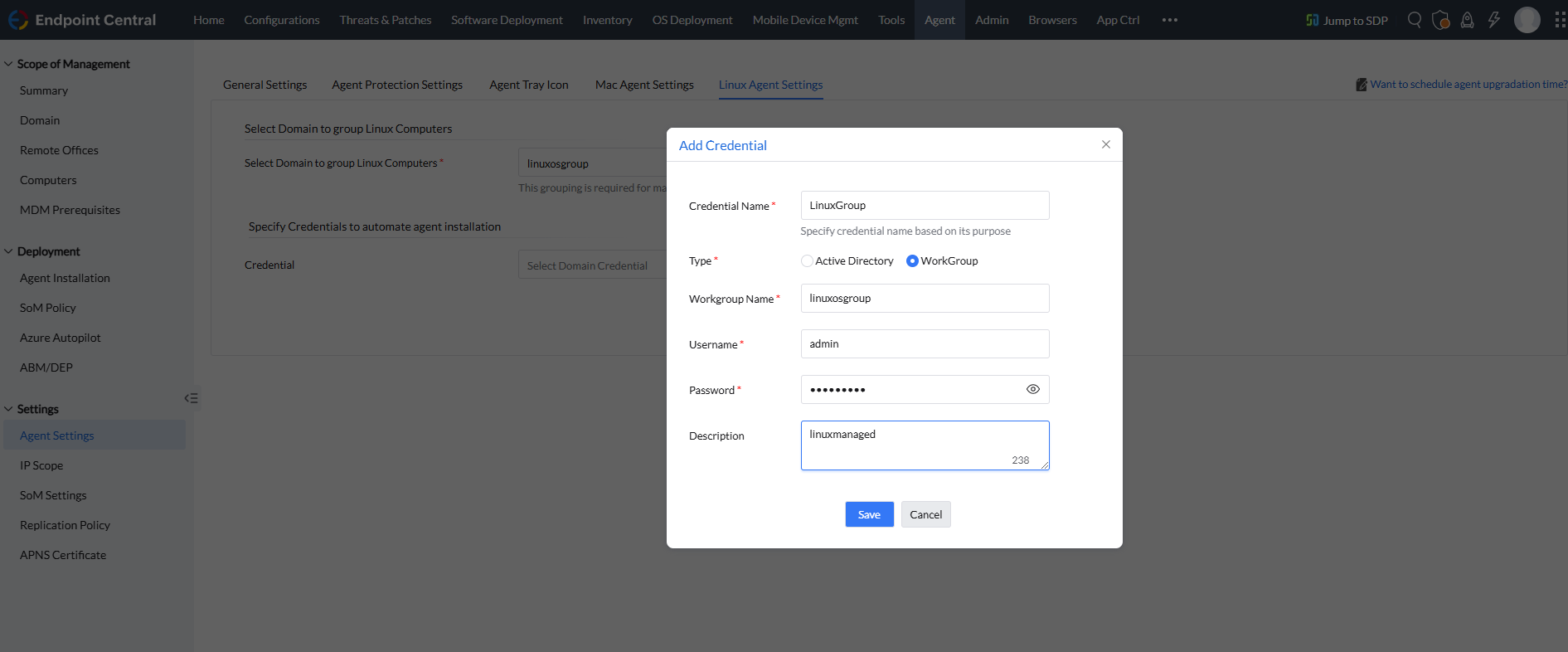
Note:
- These credentials will be used for SSH access to the Linux machine to perform the agent installation. Ensure that the credentials have SSH access and
sudo permissions for installation. They are not used by the agent for any other purpose.
- If you Facing trouble in SSH access click here.
- For invoking the installation on client computers, the SSH port (default port 22) should be open on the computers where the agent needs to be installed. The SSH port is used only for agent installation purposes and not for agent-server communication.
- Add the Computer to the Scope of Management (SoM)
- Navigate to Agent > Computers and click the +Add Computer(s) button to open the Add Computer popup.
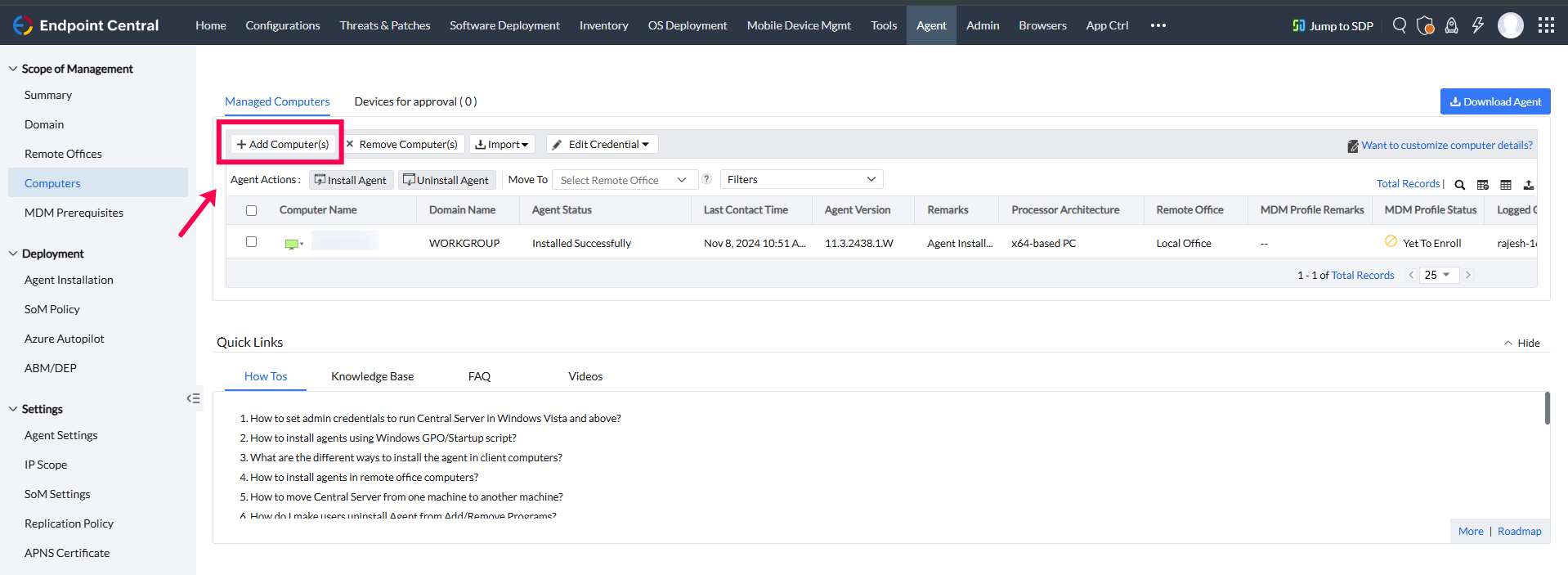
- If you’ve added a domain:
- Choose your domain from the dropdown.
- Select the computer(s) you want to add and click Next.
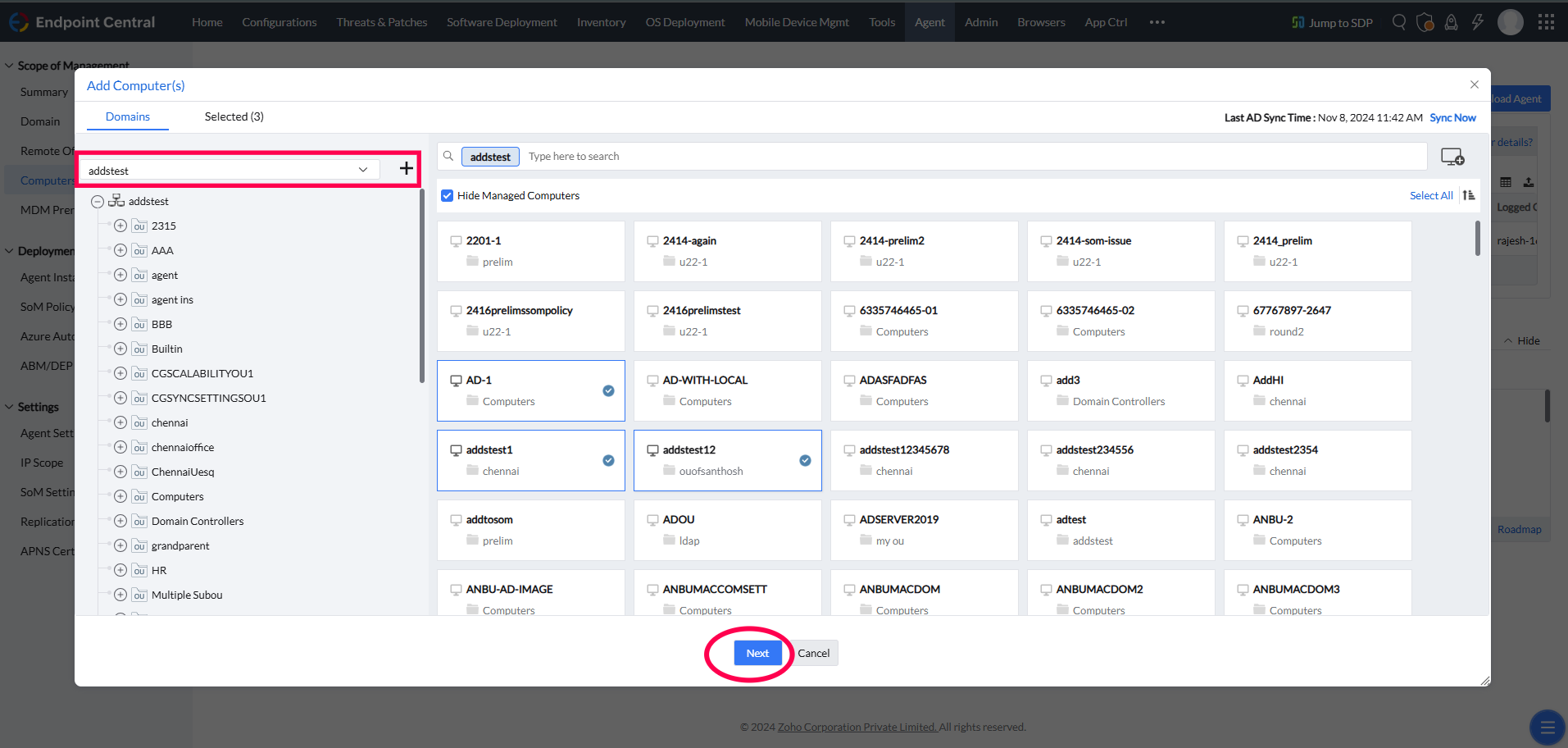
- The selected computer(s) will now list in the next screen. Here, you can:
- Choose the Remote Office from the dropdown.
- Click Install Agents to start installation immediately, or click Add to SoM to add the computer(s) to the Computers page for later installation.
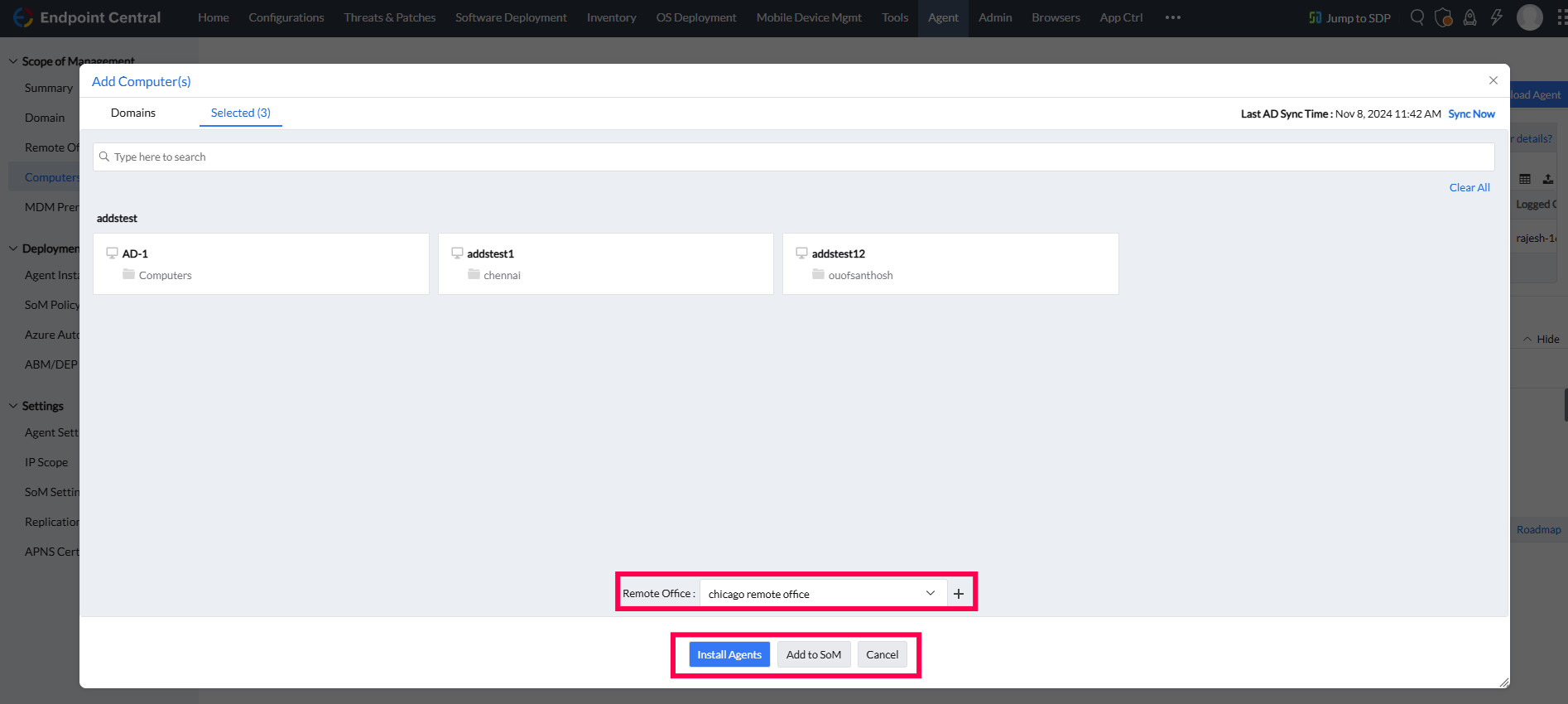
- Alternatively:
- Click the computer icon in the upper-right corner.
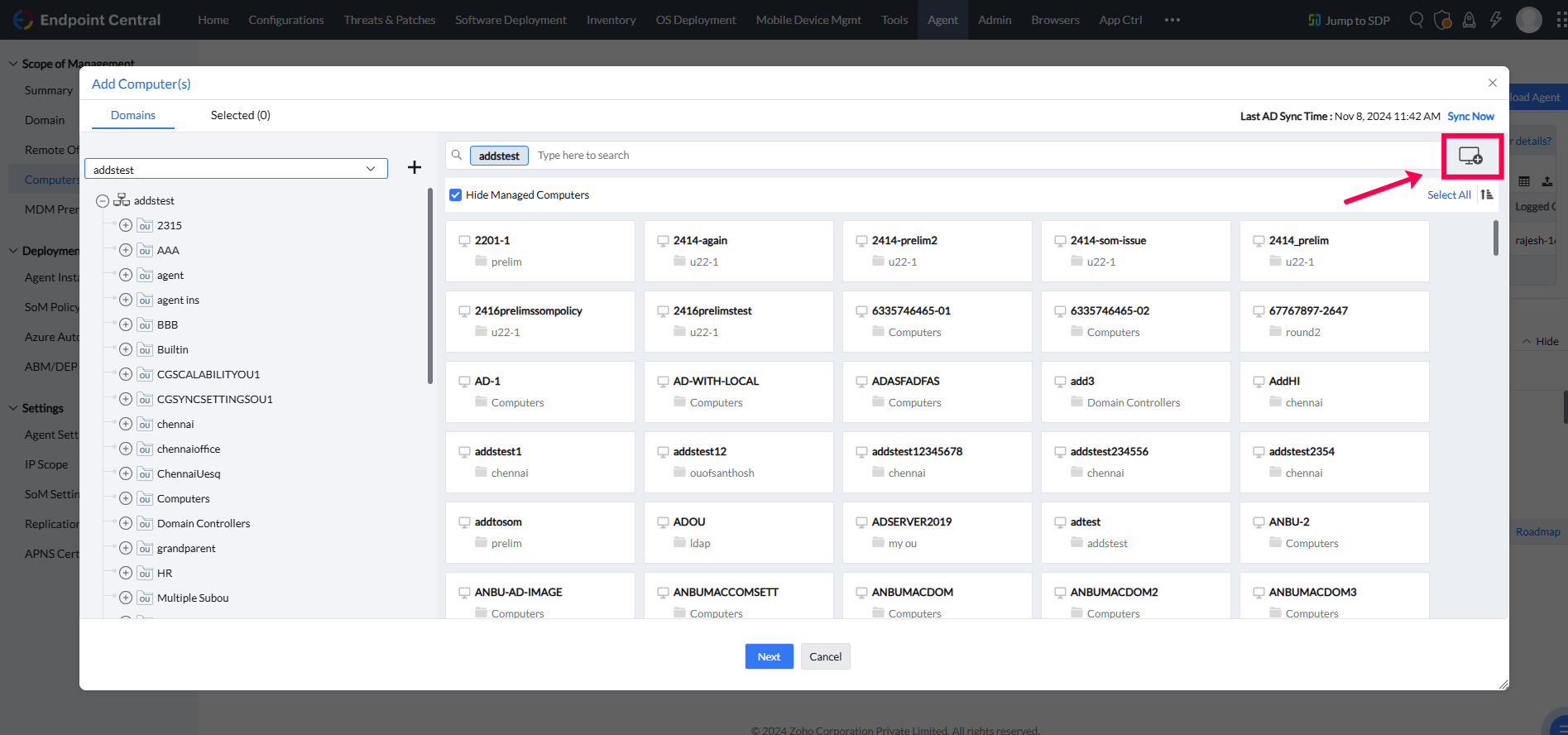
- Enter the name(s) of the computer(s) to add, separated by commas if adding multiple (e.g.,
computer1, computer2).
- Press Enter to add the computer(s).
- The selected computer(s) will display in the list. Choose the Remote Office and click Install Agents for immediate installation, or Add to SoM for later installation.
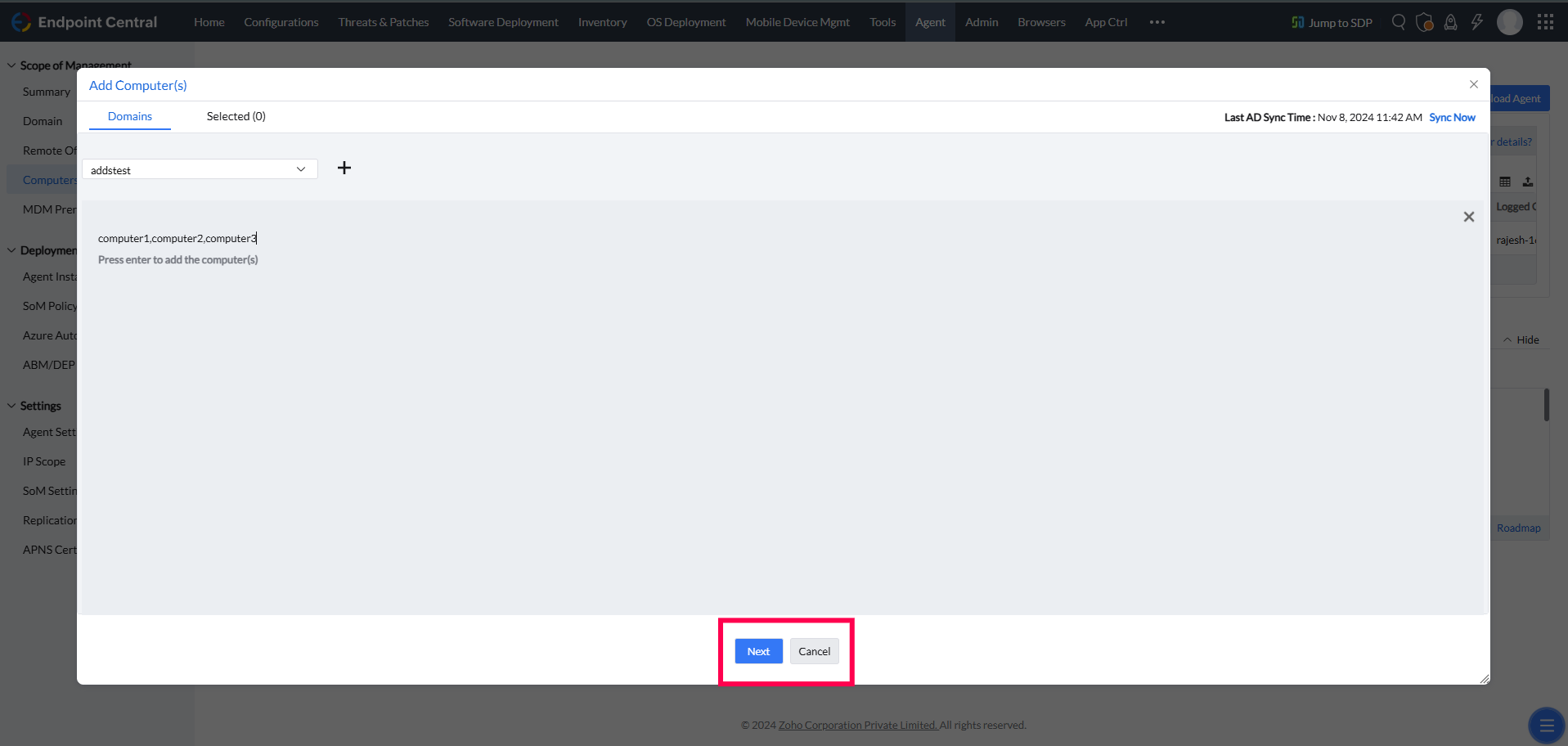
- Initiate Agent Installation
- Click the Instal Agent Icon in left corner.
- Now Agent Installation will initiated
Installing Linux Agents Using IP Range or SSH Keys
To install Linux agents using a Distribution Server or AWS, follow the steps mentioned on the designated installation page.
Installing Linux Agents Using Linux OS Imaging
To install Linux agents usingLinux OS Imaging, follow the steps mentioned on the designated installation page.
How to Uninstall Linux Agent
Manual Uninstallation
- Navigate to the Agent Installation Directory: cd /usr/local/manageengine/uems_agent/
- Set Executable Permissions: chmod +x RemoveUEMSAgent.sh
- Run the Removal Script: ./RemoveUEMSAgent.sh
- OTP Prompt: (if Agent Protection Settings enabled) you will be prompted to choose between GUI or CLI for input and provide the OTP Learn more about Agent Portection Settings.
- Agent will be uninstalled.
SOM Uninstallation
- Remove from SOM: Removing the computer from SOM will trigger the agent uninstallation on its next refresh cycle or immediately if the NS is live and marked as "green".
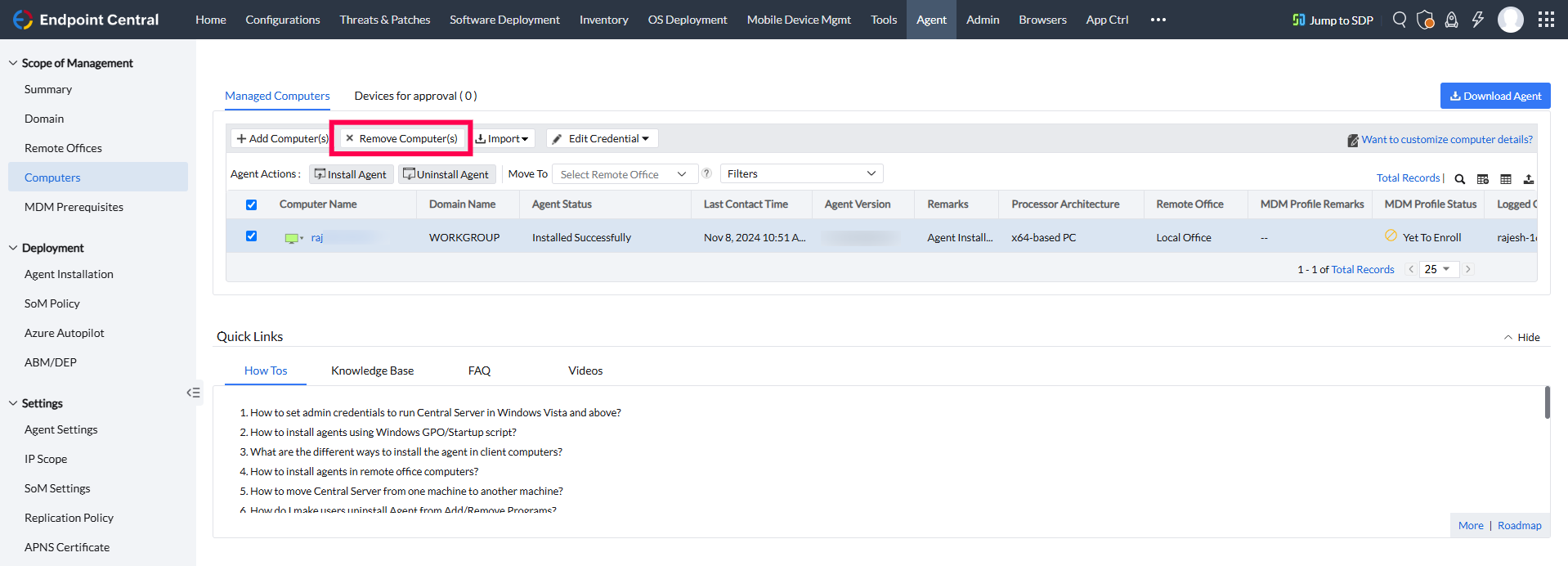
- Uninstall via Server Trigger: Selecting "Uninstall Agent" from the server will initiate an SSH-triggered uninstallation. This is applicable for On-Premises (local & DS) as well as Cloud DS deployments. This option is not available for MSP.
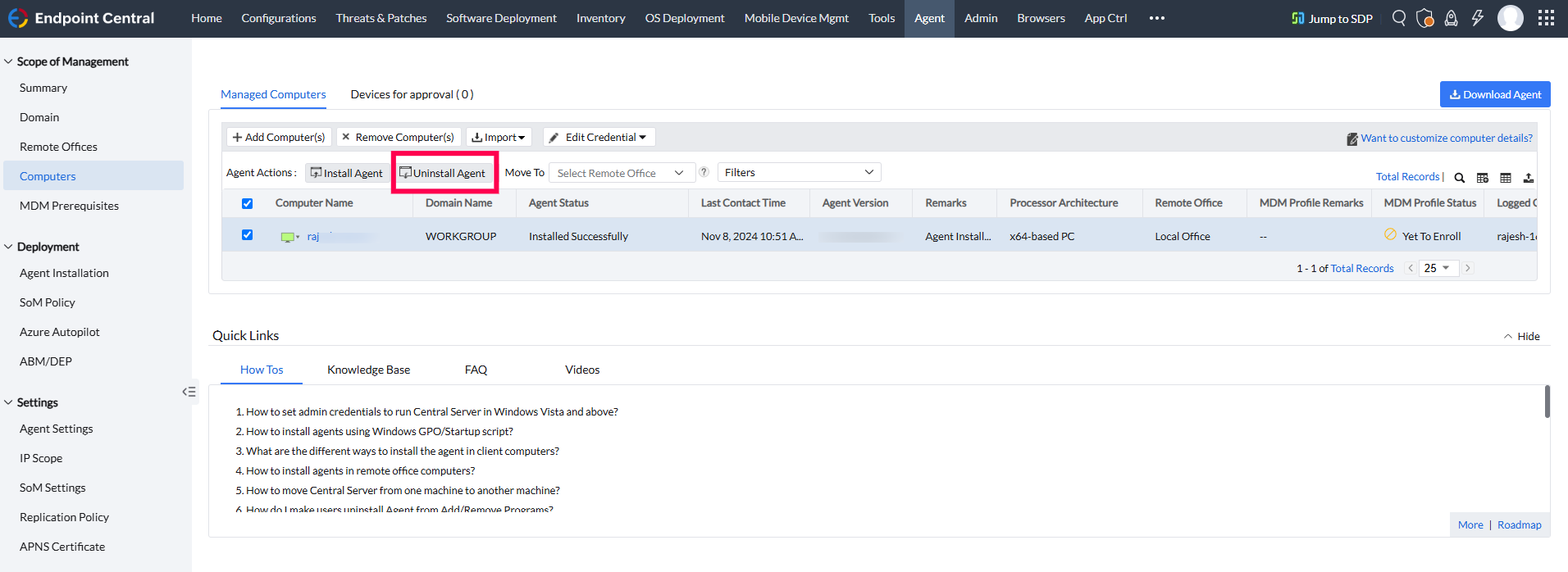
Conclusion
This guide provided the necessary steps to install, configure, and uninstall UEMS Linux agents on supported systems using manual, remote, and distribution-based methods. Follow the outlined instructions for seamless agent management on Linux systems.
